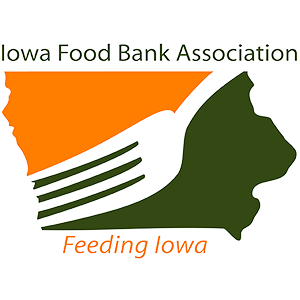On June 18, 2023, the Omaha World Herald ran an op-ed by Brian Barks, President and CEO of Food Bank for the Heartland, and Michaella Kumke, President and CEO of Food Bank of Lincoln. View the Omaha World Herald op-ed here. Below is also the complete op-ed.
Everyone needs nutritious food to thrive, and in every community in America, people are working hard to provide for themselves and their families. Yet in 2021, 34 million people—1 in 10 people—faced food insecurity in the U.S. and the Heartland is not immune. Hunger is a profound issue in every one of Nebraska’s 93 counties. Today in our state, an estimated 9.8% of people experience food insecurity. Of that, 13.5% are children. And the situation is getting worse.
Hunger can affect any one of us with a change of circumstances. As we face a perfect storm of stubbornly high grocery prices, the end of emergency food benefits, and severely strained food bank supplies, we need focused, bipartisan solutions to help end hunger in our communities.
Here’s the good news: Every five years, Congress reauthorizes the Farm Bill, which is the federal legislation that governs many critical food and farming programs. Lawmakers are discussing the 2023 Farm Bill right now, and they can help alleviate the shortages at food banks and other challenges to accessing nutritious food many families are facing by investing in programs that have a proven track record of effectiveness and efficiency.
Our nation’s food banks and pantries, including Food Bank for the Heartland and Food Bank of Lincoln, have played an important role in providing consistent access to healthy foods during times of economic hardship, including during the pandemic. Collectively, both food banks are projected to supply food to more than 2.5 million duplicated individuals this fiscal year through various anti-hunger programs. That number has nearly tripled since 2018. In addition to the rising need for food assistance, continued supply chain disruptions, increased food purchase and transportation costs, and a decrease in emergency food from the federal government have hit food banks hard. In 2021, the Feeding America network received 2.8 billion pounds of food through The Emergency Food Assistance Program (TEFAP). In 2022, that number dropped to 1.2 billion pounds—a 57% decrease.
As a result, both Food Bank for the Heartland and Food Bank of Lincoln saw drastic decreases in USDA food availability since the Federal pandemic response in FY 2021. Since that time frame, the USDA provided 10.8 million fewer pounds of food to both food banks, creating devastating effects on their operations and negatively impacting Network Partners.
Cars are lined up at our mobile pantry and we have run out of food to give out for the past three years. We are not only a meal provider but a pantry as well. Every two weeks we send an assortment of food items to our Home Delivered Clients that are homebound, and they are very grateful as the elderly don’t always ask for what they need. We are so fortunate to be a partner with the Food Bank to help to serve others.
Tami Thurn, Executive Director of Cozad Grand Generation Center
Consumers also face the largest increase in food prices since the 1980s. While prices generally increased about 2% in prior years, they increased 8.5% from March of 2022 to March of 2023. While inflation has impacted everyone, it hits our rural communities the hardest. These communities play a critical part in putting food on tables across the country, yet people in rural communities are more likely to face hunger. Higher rates of poverty in rural communities make it harder for people to afford food, and there may only be a single grocery store—miles or even hours away.
Food banks will continue to do the vital work of helping to provide meals in our communities, but members of Congress must remain committed partners in the effort to end hunger. A properly crafted 2023 Farm Bill would strengthen federal nutrition programs, including The Emergency Food Assistance Program (TEFAP) and the Supplemental Nutrition Assistance Program (SNAP). These programs are critical hunger lifelines for our communities and food banks.
TEFAP is a program that supplies food banks with nutritious foods from U.S. farmers and producers. SNAP is the nation’s most effective anti-hunger program, helping more than 40 million people—including children, older adults on fixed incomes, people with disabilities and working adults—afford the nutritious food we all need. Together, these programs help bridge the hunger gap for families and individuals across Nebraska and the country.
Congress must invest in federal nutrition programs to ensure food assistance continues to reach neighbors in need. As lawmakers negotiate the farm bill, boosting funding for TEFAP to help more food banks keep shelves stocked, and modernizing SNAP to ensure more people can access affordable, nutritious food can make a difference in reducing food insecurity.
As grocery prices remain high and supply chain disruptions continue, Congress must come together and provide bipartisan support to people facing hunger. As an advocate, we are asking you to double down on our nation’s commitment to ending hunger by strengthening critical anti-hunger programs in the 2023 Farm Bill. Making this year’s Farm Bill work for rural, suburban, and urban communities is a first step toward that goal.
While the food insecurity crisis will not be solved overnight, we are committed to working with our elected representatives to develop impactful legislation and strategies for the children, families, seniors, and veterans making unthinkable decisions every day.
additional Farm Bill resources
- June 19, 2023 Nebraska Examiner article: Nebraska delegation hears from farmers, ranchers, researchers on the next farm bill
- View Farm Bill advocacy efforts and topics to share with your family, friends, and network
- May 2, 2023 Feeding America article: Latest Food Bank Survey Finds Majority of Food Banks Reporting Increased Demand






